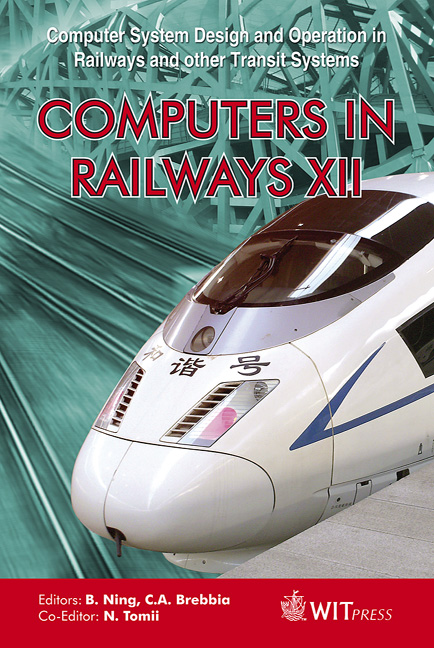A Multi Scalable Model Based On A Connexity Graph Representation
Price
Free (open access)
Transaction
Volume
114
Pages
12
Page Range
193 - 204
Published
2010
Size
608 kb
Paper DOI
10.2495/CR100191
Copyright
WIT Press
Author(s)
L. G´ely, G. Dessagne, P. Pesneau & F. Vanderbeck
Abstract
Train operations will be greatly enhanced with the development of new decision support systems. However, when considering problems such as online rescheduling of trains, experience shows a pitfall in the communication between the different elements that compose them, namely simulation software (in charge of projection, conflict detection, validation) and optimization tools (in charge of scheduling and decision making). The main problem is the inadequacy of the infrastructure’s monolithic description and the inability to manage together different description levels. Simulation uses a very precise description, while the optimization of a mathematical problem usually does not. Indeed, an exhaustive description of the whole network is usually counter-productive in optimization problems; the description must be accurate, but should rely on a less precise representation. Unfortunately, the usual model representing the railway system does not guarantee compatibility between two different description levels; a representation usually corresponds to a given (unique) description level, designed in most cases with a specific application in mind, such as platforming. Moreover, further modifications that could improve performances or precision are usually impossible. We propose, therefore, a model with a new description of the infrastructure that permits one to scroll between different description levels. These operations can be automated via dynamic aggregation and disaggregation methods. They allow one to manage heterogeneous descriptions and cooperation between various tools using different description levels. This model is based on the connexity graph representation of the infrastructure resources. We will present how to generate corresponding mathematical models based on resource occupancy and will show how the aggregation of resources
Keywords
modeling, optimization, railway operations, traffic management, infrastructure representation





